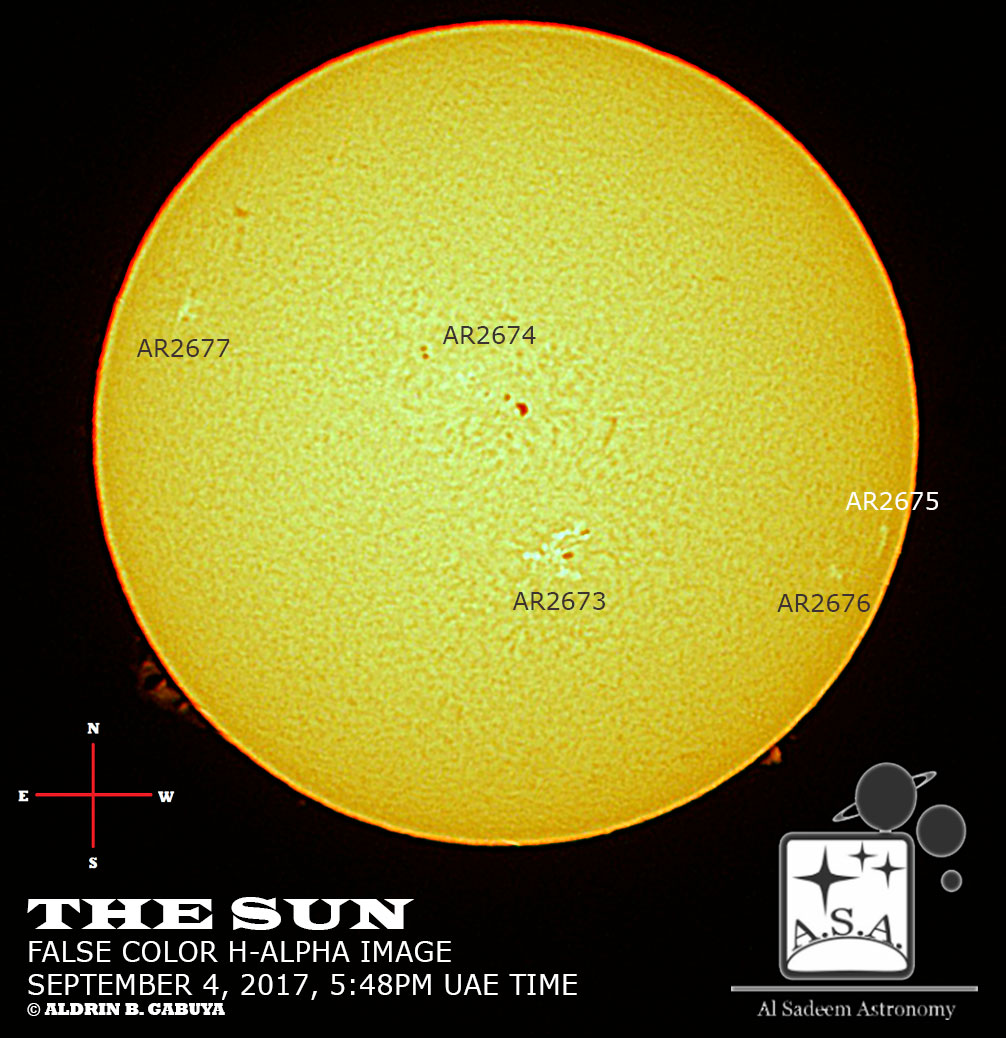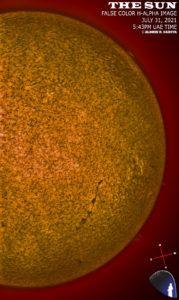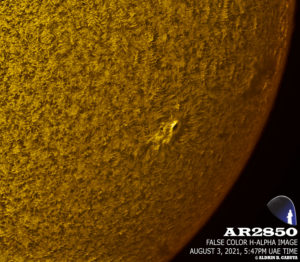Here are today’s solar images taken from Al Sadeem Observatory, September 4, 2017.
The sky was clear but experienced intermittent light to moderate winds, making the seeing and transparency average to poor at the time these images were taken.
The Sun has become more dynamic with the current presence of five distinct active regions and moderate solar flaring activity. From the recent space weather reports*, over the past 24 hours, AR2673 has developed more spots quickly and produced a moderately strong M-class flare which resulted in an R1 radio blackout on the sunlit side of the Sun, particularly in the Americas and Atlantic region at around 3:30PM UTC. It caused a slight signal breakdown on radio and navigation satellite communications since the flare struck Earth-ward. On the other hand, despite its large structure, AR2674 became less active as it only emitted a single low-level C-class flare. The rest (AR2675, AR2676, and AR2677) remained magnetically stable and inactive without any flaring activity recorded.
The latest sunspot number (based on visual count and Wolf number calculation) is 106.
With this stance, space weather agencies* predict further solar flaring activity (ranging from B-class to C-class with a moderate chance of M-class) in the next few days. The extent of the frequency and intensity of the Sun’s activity will highly depend on the magnetic flux fluctuations happening in the visible ARs in the coming days. Close monitoring is being conducted by numerous space weather agencies for any significant development.
*courtesy of Solar Influence Data Center (SIDC), NOAA-Space Weather Prediction Center (NOAA-SWPC)










